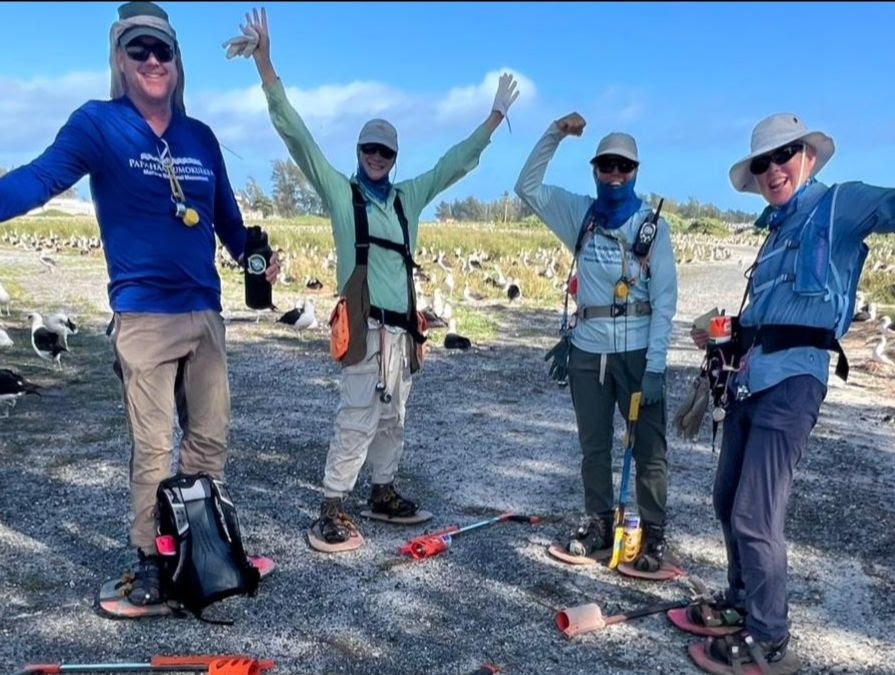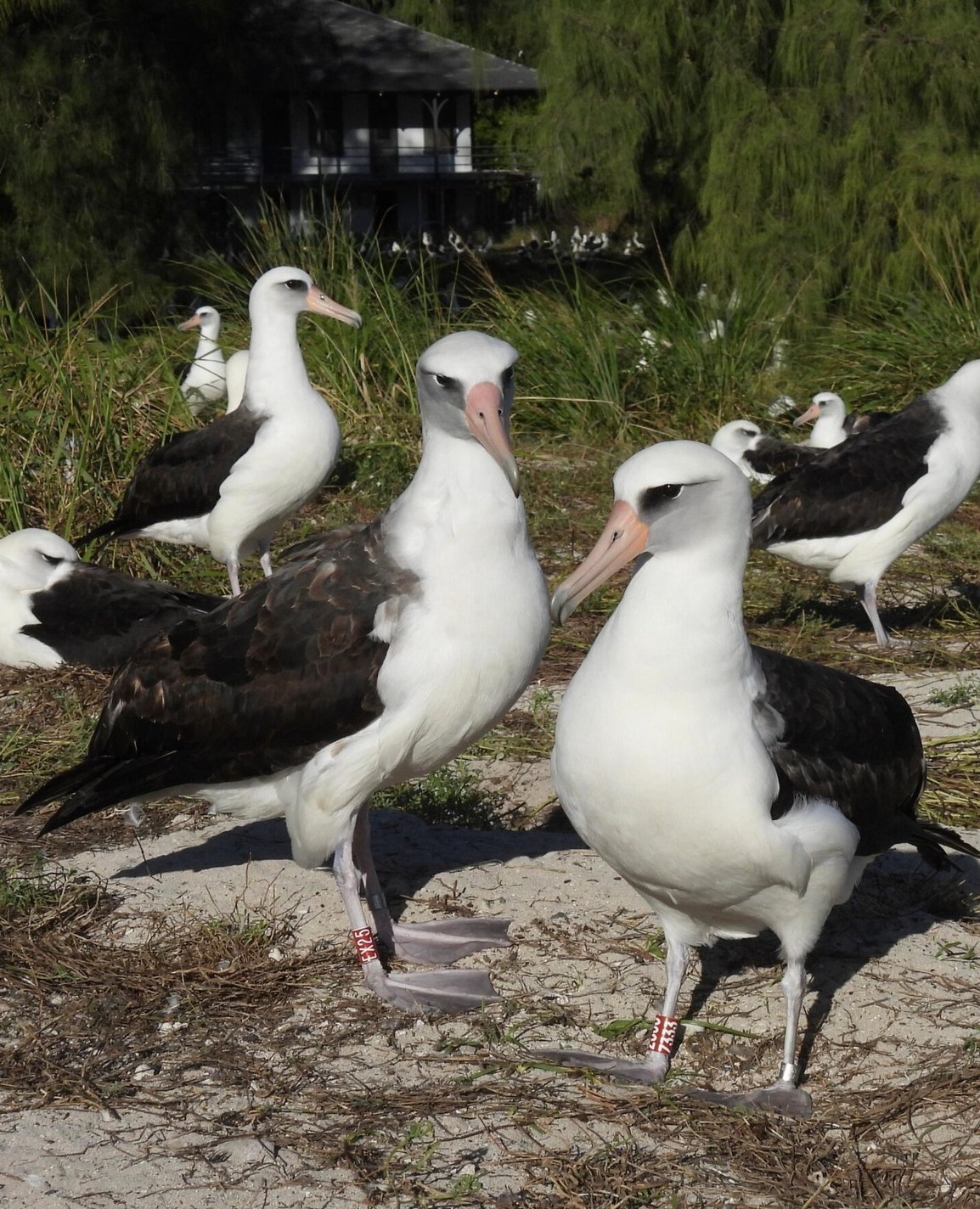 Sampling sites for avian influenza on Possession and Kerguelen Islands. See the publication for details
Sampling sites for avian influenza on Possession and Kerguelen Islands. See the publication for details
Augustin Clessin (Centre d’Ecologie Fonctionnelle et Evolutive, Université Montpellier, France) and colleagues have published open access in Nature Communications on records of highly pathogenic avian influenza detected in the French sub-Antarctic islands of Possession, Crozets and Kerguelen, including in Vulnerable Wandering Albatross Diomedea exulans chicks.
The paper’s abstract follows:
“Since 2020, the outbreak of high pathogenicity avian influenza (HPAI) H5N1 virus clade 2.3.4.4b has turned into the largest documented panzootic. Here, we describe its arrival into the Indian Ocean sub-Antarctic archipelagos of Crozet and Kerguelen, where we first detected the virus in October 2024 in dead southern elephant seals. While the panzootic is ongoing, it has already caused unprecedented mortalities of marine mammals and seabirds. We collected brain swabs from seal and seabird carcasses and obtained 25 novel HPAI H5N1 2.3.4.4b sequences. Using phylogeographic analyses, we show that there have been independent introductions of the virus to Crozet and Kerguelen islands, most likely from the distant South Georgia islands in the Southern Atlantic, and not from the more nearby coasts of South Africa. Our results point to a year-long gap in genomic surveillance in the sub-Antarctic region. Locally, our analyses show that the virus is transmitted between different species. Our serological analyses show that some southern elephant seal had mounted an anti-H5 antibody response. Through its circumpolar spread to the Indian Ocean, HPAI H5N1 2.3.4.4b moves closer to Australia, which remains free from infections with this strain, and represents a major threat to the sub-Antarctic wildlife.”
Reference:
Clessin, A., Briand, F.-X., Tornos, J., Lejeune, M., De Pasquale, C., Fischer, R., Souchaud, F., Hirchaud, E., Bralet T., Guinet, C., McMahon, C.R., Grasland, B., Baele, G. & Boulinier, T. 2025. Circumpolar spread of avian influenza H5N1 to southern Indian Ocean islands. Nature Communications 16, 8463. doi.org/10.1038/s41467-025-64297-y.
John Cooper, Emeritus Information Officer, Agreement on the Conservation of Albatrosses and Petrels, 14 January 2026
Note: this paper has been previously featured in ACAP Latest News under a different title and a differently-worded abstract as a preprint.

 English
English  Français
Français  Español
Español 


